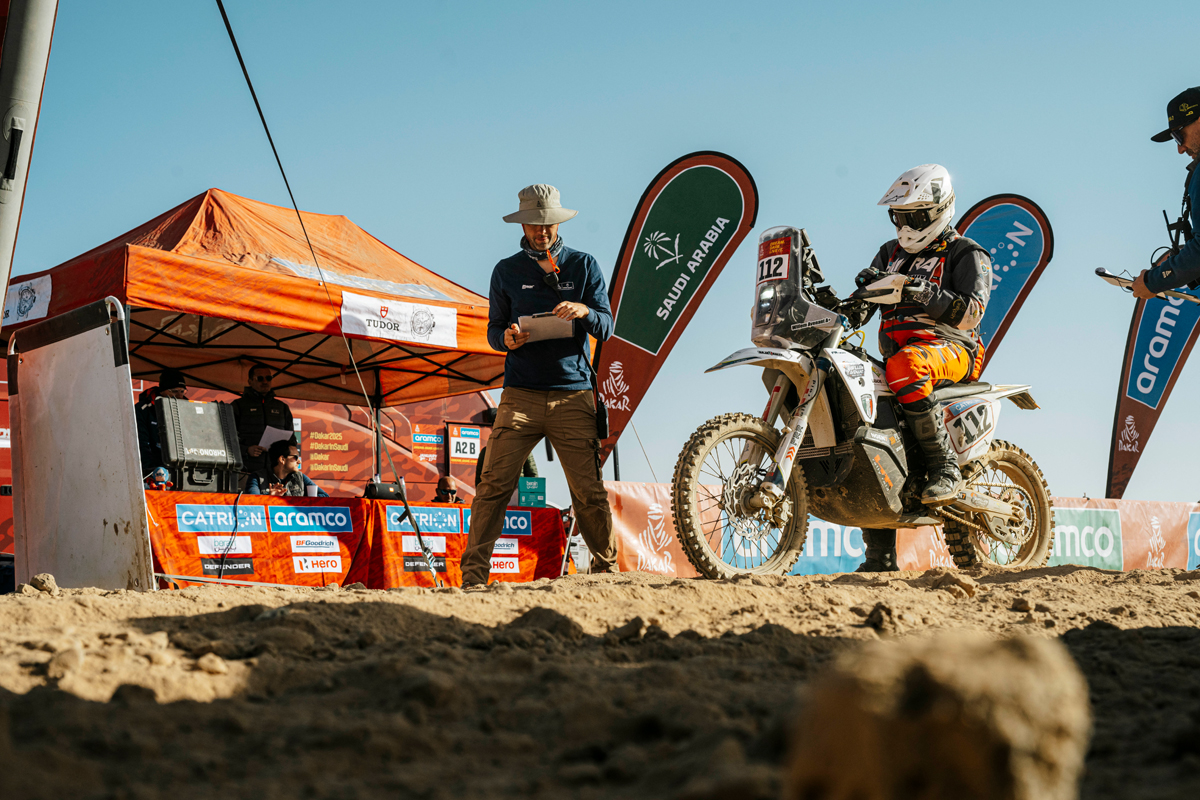
The Dakar Rally is the ultimate test of endurance, skill, and mental fortitude. Every competitor lining up at the start dreams of making it to the finish line, but the odds of survival diminish drastically for those who fall behind early in the race. Once you slip into the back of the pack, making up time is nearly impossible. Statistics show that riders who fall behind tend to exit the rally within the next day or two. The reason? A brutal combination of terrain conditions, vehicle traffic, and an unforgiving race structure that turns the back of the Dakar into a battlefield where survival is the only goal.
The Hell at the Back
The further back you start, the worse the conditions become. Unlike the leading riders who experience the dunes and trails in their relatively untouched form, those in the back face a course that has been completely destroyed by the passage of hundreds of vehicles before them. What was once smooth sand is now a relentless labyrinth of deep ruts, massive holes, and churned-up fesh-fesh (fine, powdery sand that swallows bikes whole). Rocks that were buried in the morning are fully exposed, turning sections into treacherous minefields. Every turn, every crest, and every kilometre presents a new battle to stay upright.
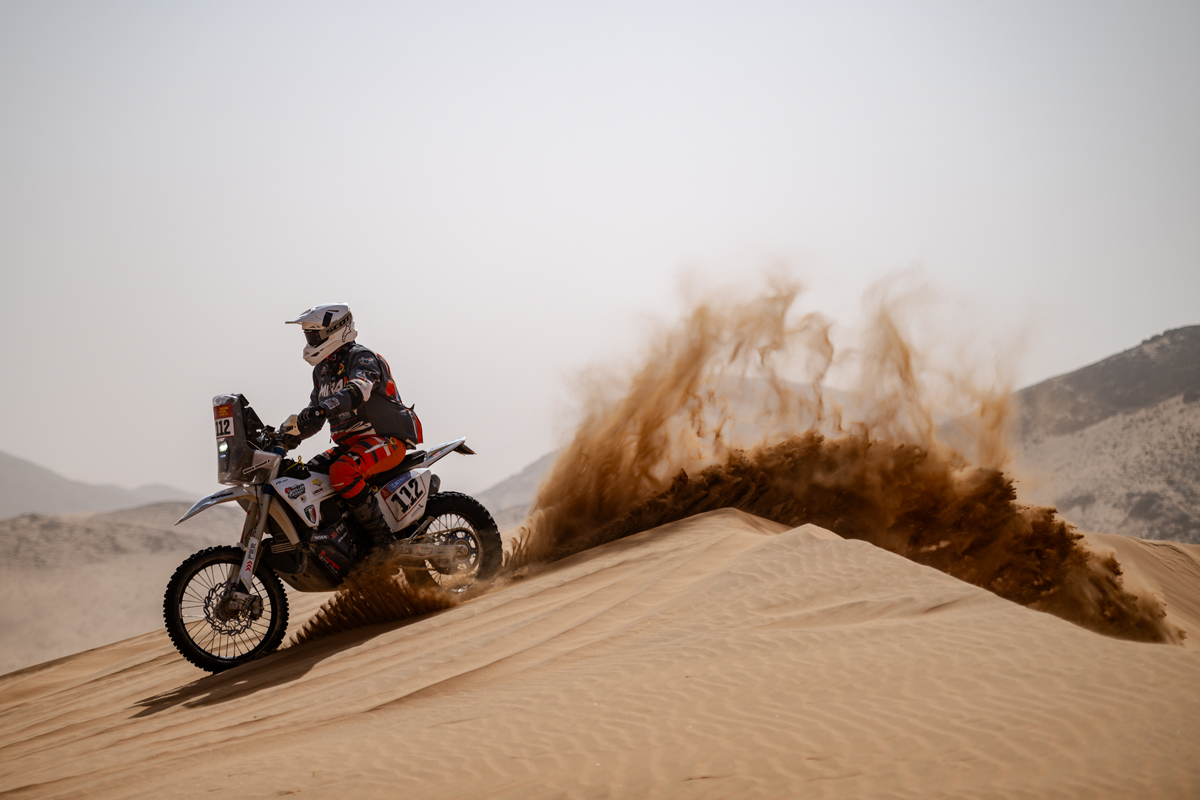
The Dust, the Cars, and the Trucks
Falling to the back means riding in perpetual dust clouds that reduce visibility to nearly zero. The trucks and cars that started later in the day catch up quickly, and when they do, the real danger begins. Unlike a motorcycle, a car or truck driver has limited visibility and often relies on their Sentinel warning system to alert slower riders. But in the chaos of the Dakar, that beep might come too late. Being passed by a truck in the dust is a harrowing experience—several tons of metal moving at high speed, unable to see you, leaving you choking in a cloud so thick it blots out the sun. Every moment in this environment is a gamble, and the more time you spend here, the higher the risk of a catastrophic crash.
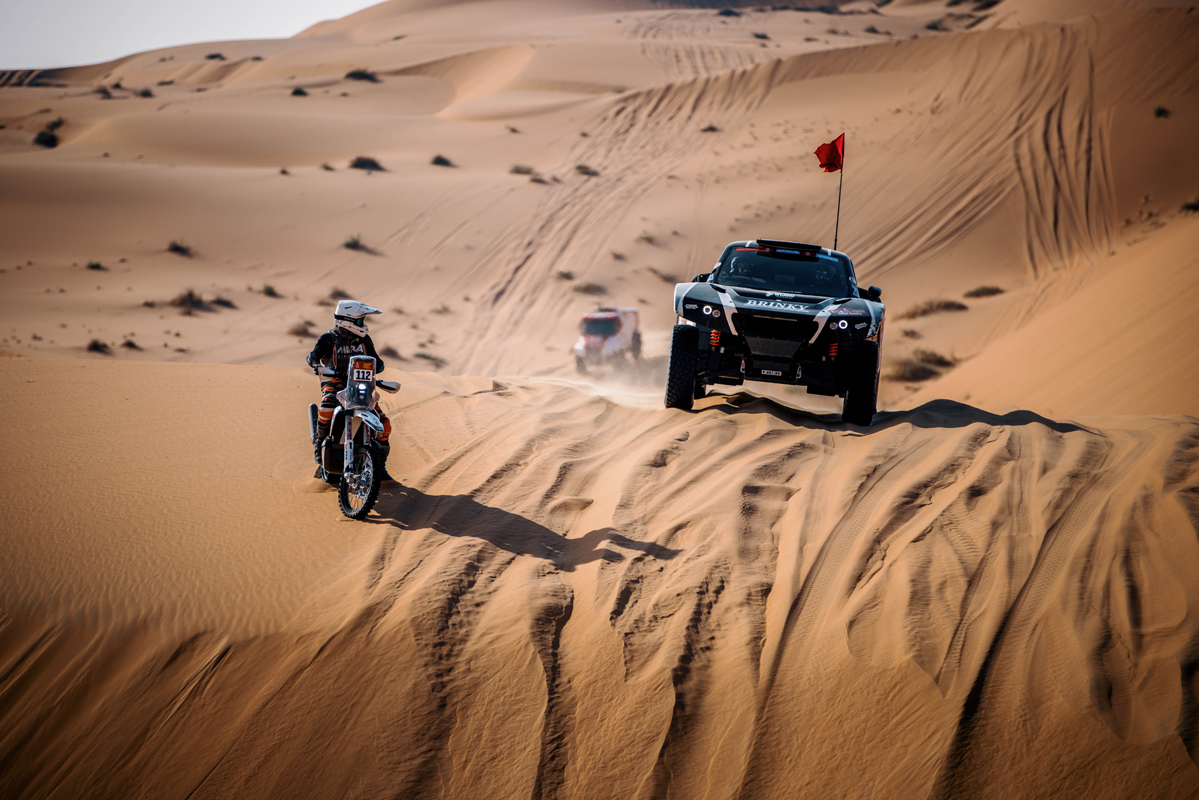
The Time Spiral: No Way Forward
When you start late, you lose daylight. And in the Dakar, daylight is everything. The early starters have the advantage of racing in full visibility, with clearer trails and less fatigue. The further back you are, the more likely it is that you’ll be racing against the clock, literally, as the sun sets and darkness sets in. Riding at night in the Dakar is a nightmare—navigation becomes infinitely harder, shadows distort the terrain, and exhaustion sets in faster. The later you finish, the less rest you get before the next brutal stage.
The numbers don’t lie: The more time you spend on the bike each day, the worse your chances of finishing. Riders in the back spend significantly longer in the saddle than the leaders, increasing their physical and mental fatigue.
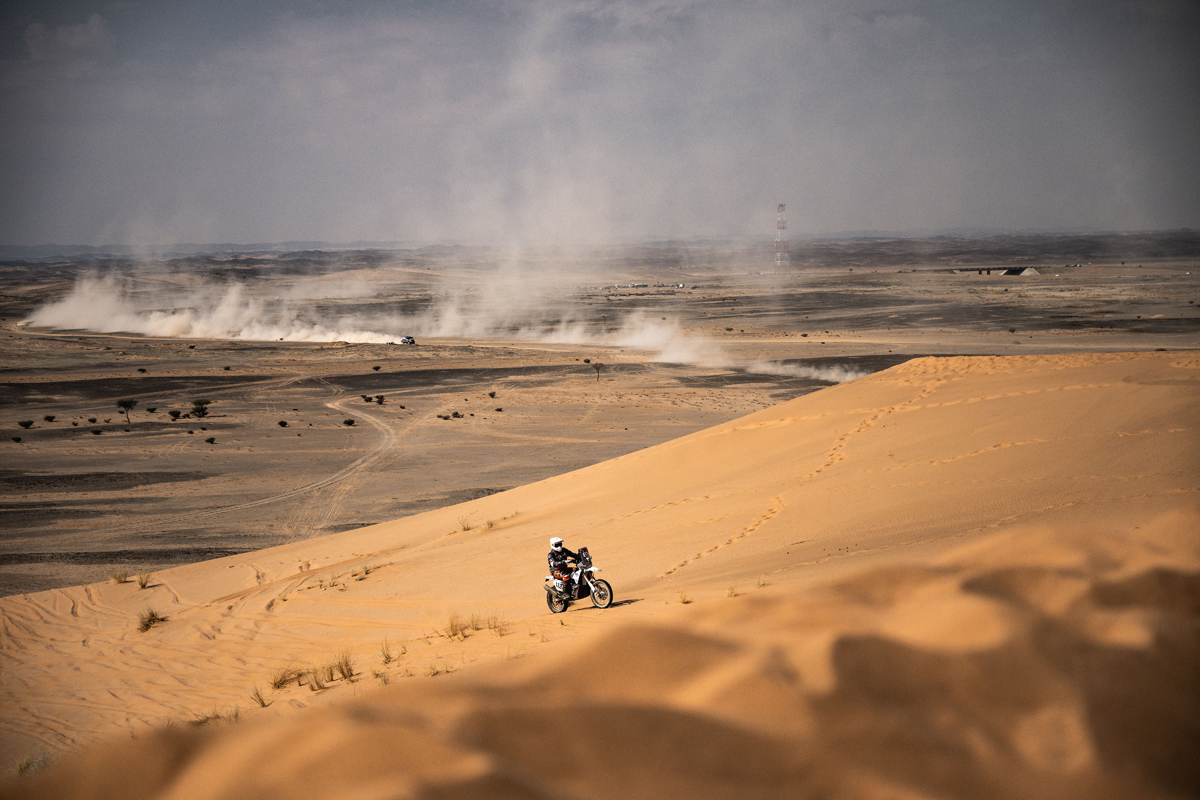
A prime example—my total riding time for Dakar was 116 hours on the bike (Specials only, if you include liaisons it is 160 hours), compared to 53 hours for the winner. That’s more than double the time in brutal conditions. My average? 9 hours per day of non-stop riding. Compare that to 4 hours per day for Daniel Sanders. The longer you ride, the more drained you become, making mistakes more likely. Fatigue leads to crashes, crashes lead to injury, and injury leads to withdrawal.
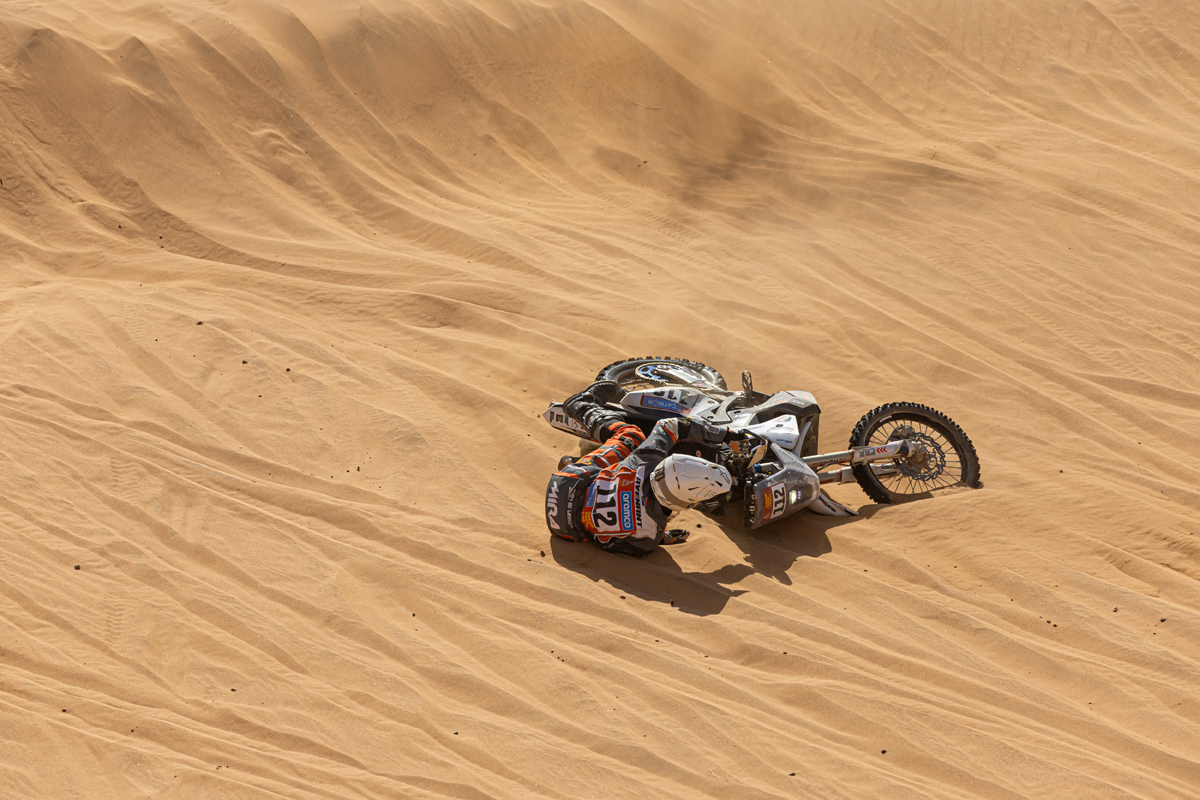
The Emotional Toll: Losing Friends Every Day
Historically, depending on the year, weather, difficulty, and terrain, only 50-60% of riders finish the Dakar each year. For me, emotionally, the hardest part was “losing friends” every day. Just as I made friends with a rider in the back and got to know him, the next day or the day after, he was gone. The mental anguish, stress, and fatigue of losing my riding partner every second day was incredibly difficult. It was inevitable—given the statistics, every time a riding partner did not show up to the start line, I knew I was one position closer to being in the same boat. Consistently being in the back and staying in the race, given the physical and mental challenges each day, is one of the hardest things to do. The loneliness of seeing those you bond with disappear from the rally makes the fight for survival even harder.
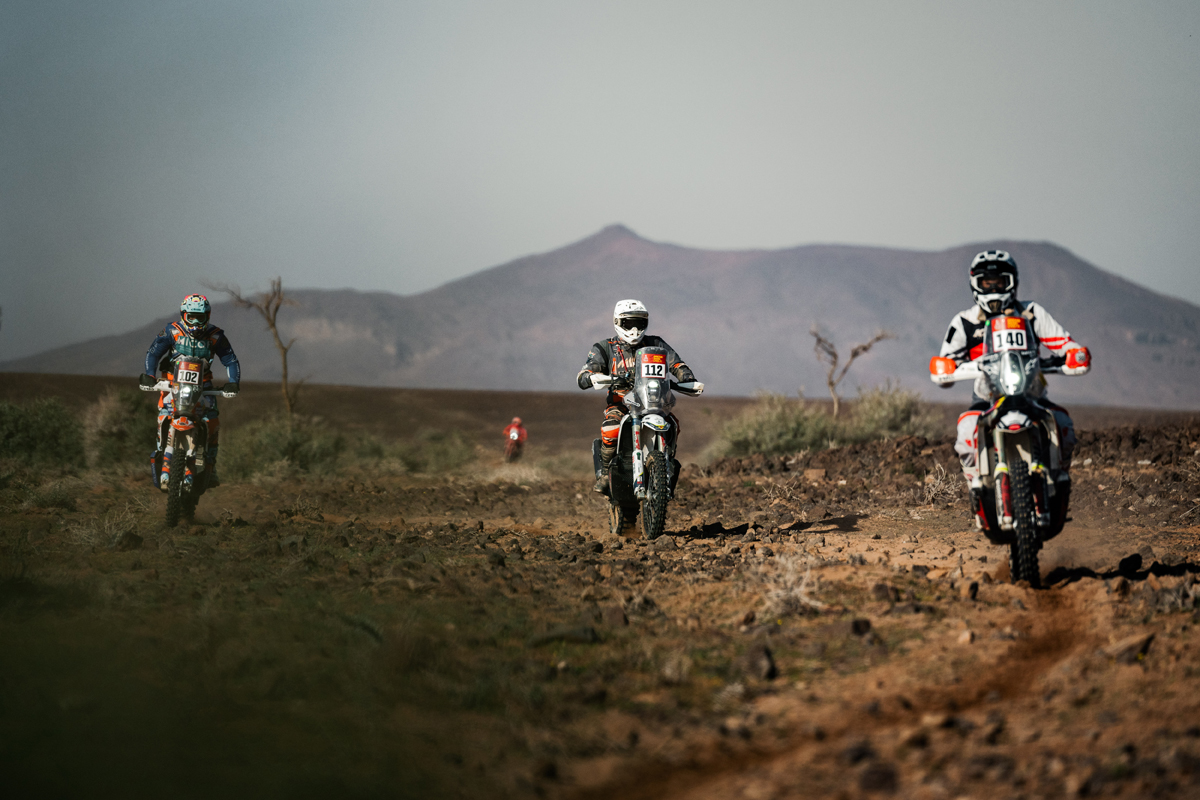
Defying the Odds
If you find yourself in the back and somehow manage to stay in the rally, you are fighting against every statistic. The withdrawal list tells a clear story: once a rider drops back, the likelihood of finishing drops with each passing stage. Every day spent at the back of the pack is a day spent defying the numbers, pushing through exhaustion, dodging trucks, and fighting through terrain that has become nearly unrideable. The Dakar is already the toughest race on earth, but for those stuck in the back, it transforms into a relentless war of attrition.
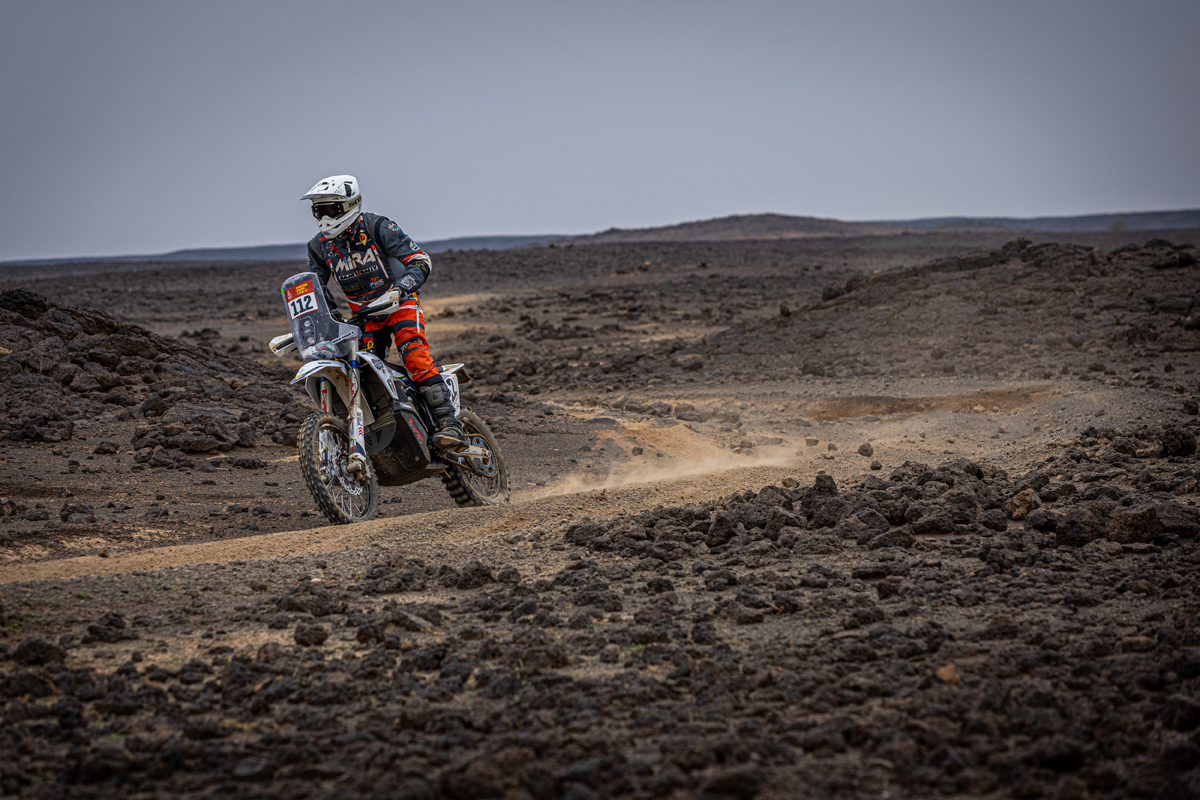
To survive here is to embrace suffering on a level most riders will never understand. It’s not just about speed; it’s about pure, unfiltered willpower. Because at the back of the Dakar, you’re not racing to win—you’re racing just to see another sunrise.
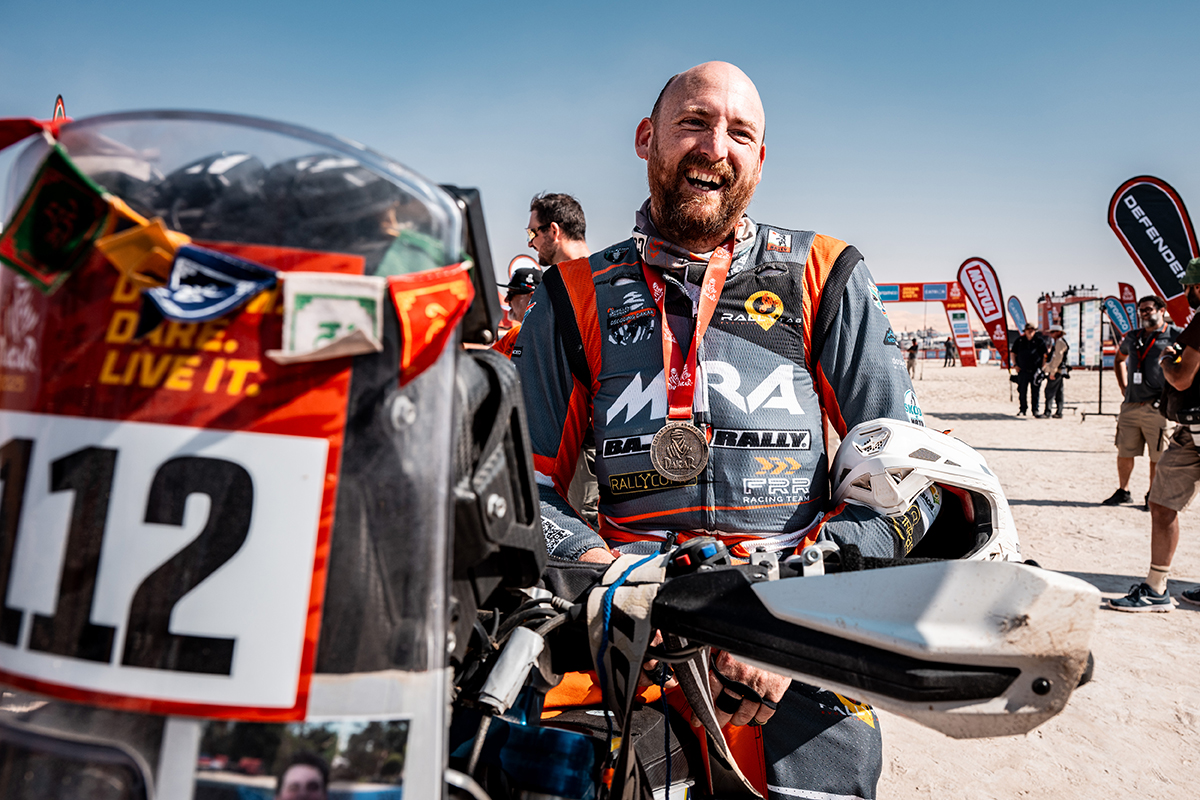
After sharing his preparation and insights through the Decoding Dakar series, Willem Avenant successfully completed the Dakar Rally. Drawing from the invaluable experience gained there—alongside years of rally racing across the globe, race director roles, training camps, and expert roadbook writing—his passion is to grow the rally community and help others succeed. Whether you’re looking to tackle your first rally, compete in Dakar, master navigation, or need a seasoned race director or team manager, Willem is here to help.
Reach out at [email protected] or connect via social media: @willemavenantracing.




